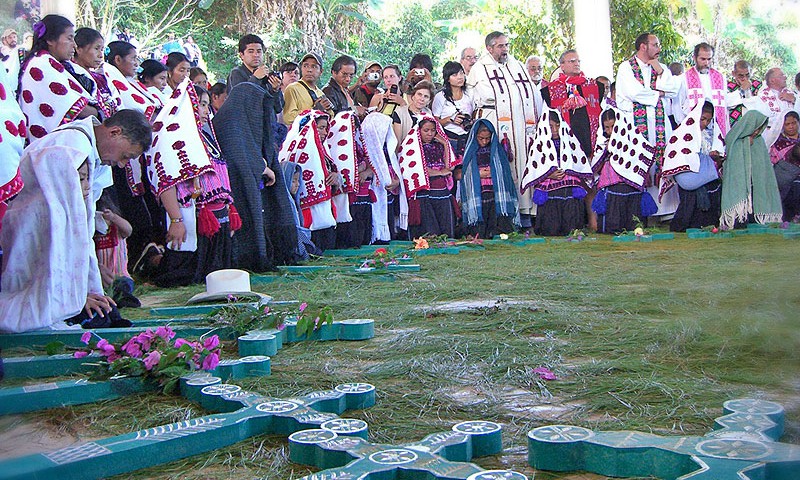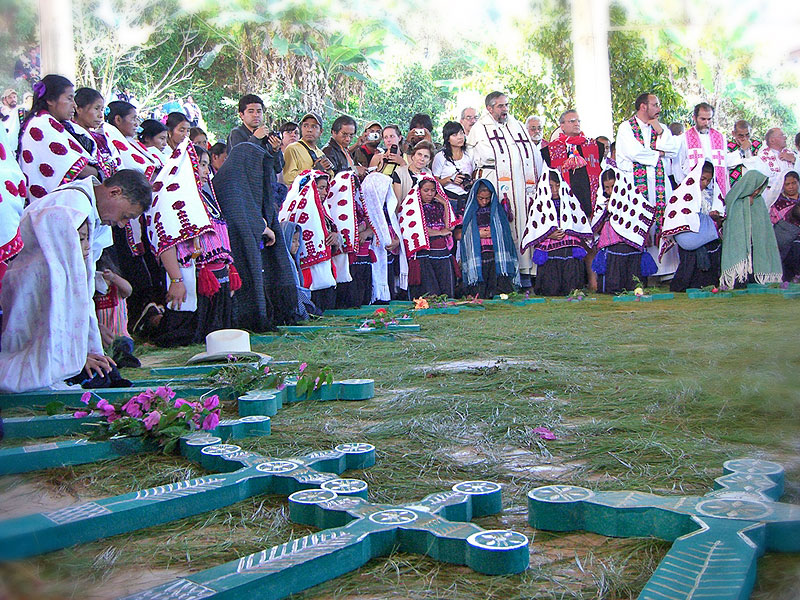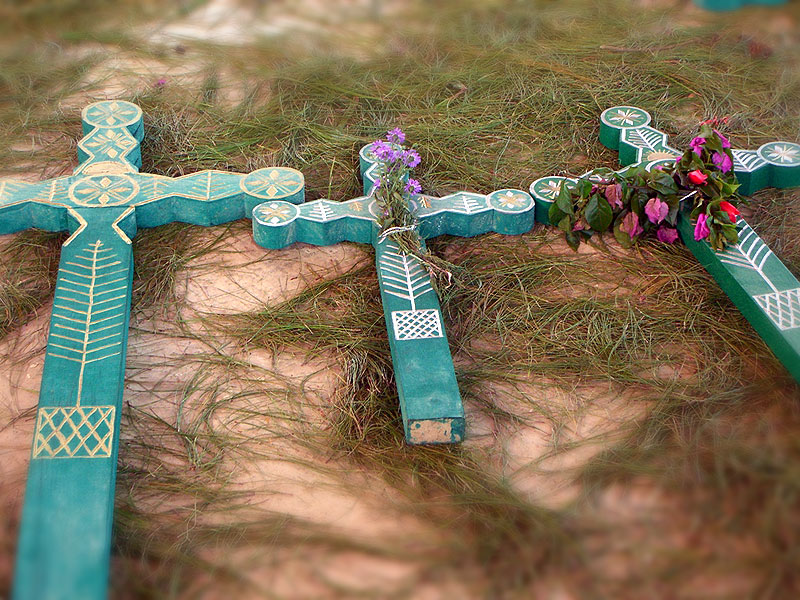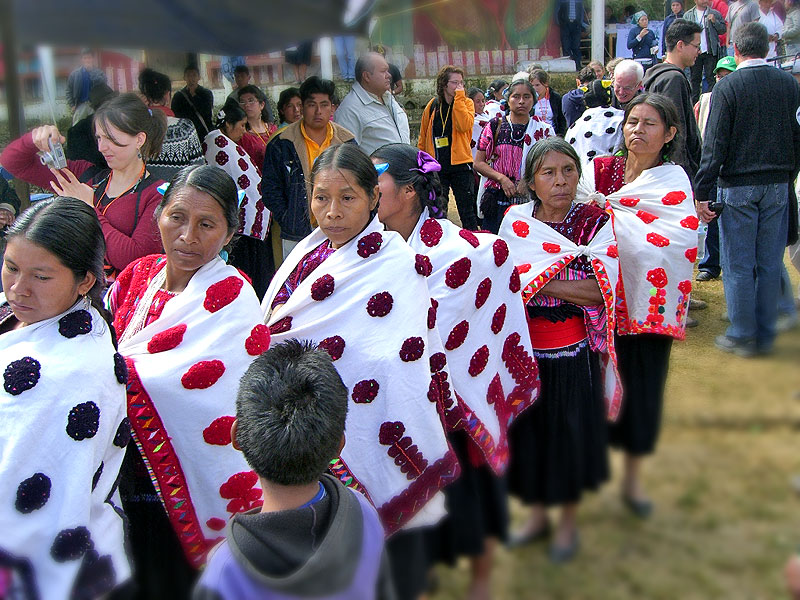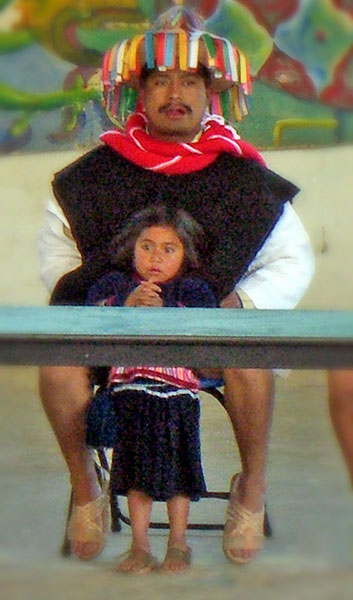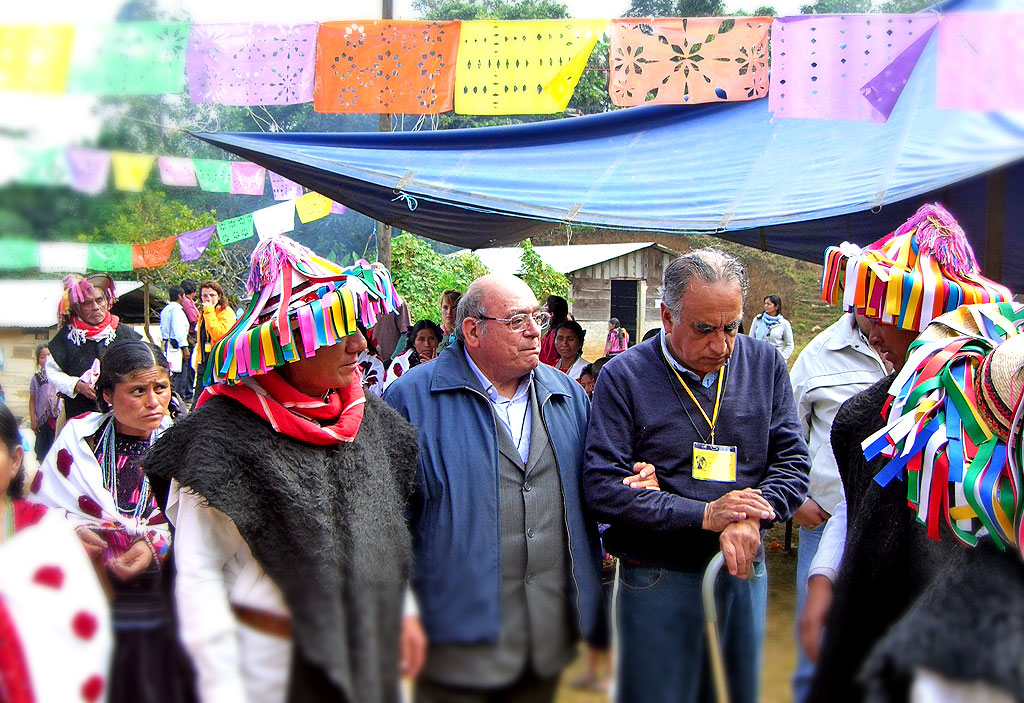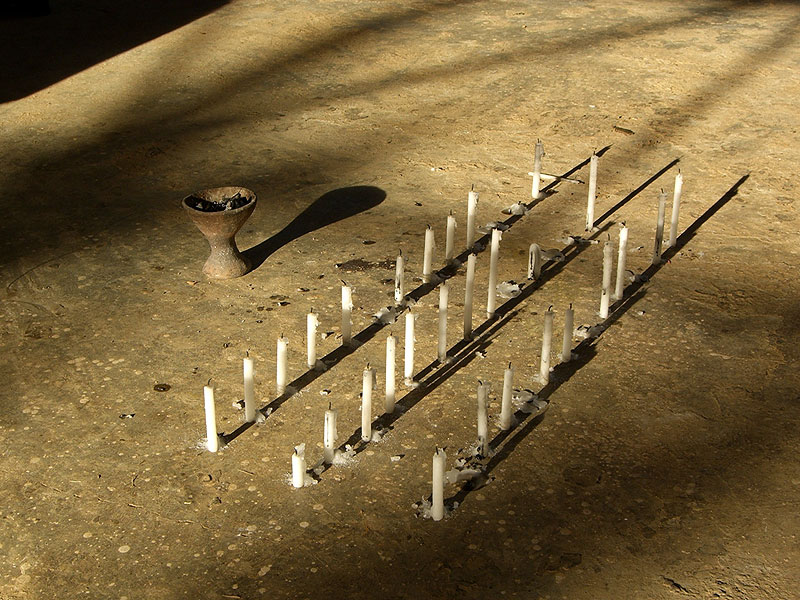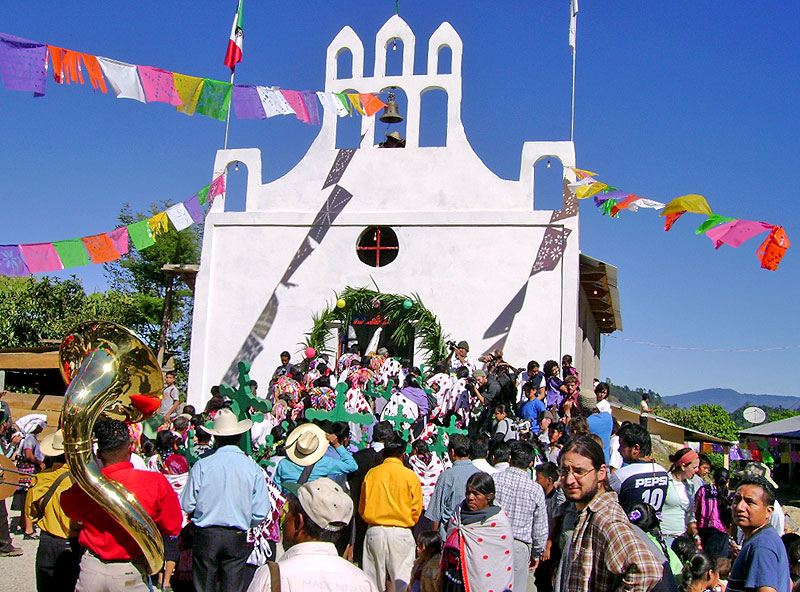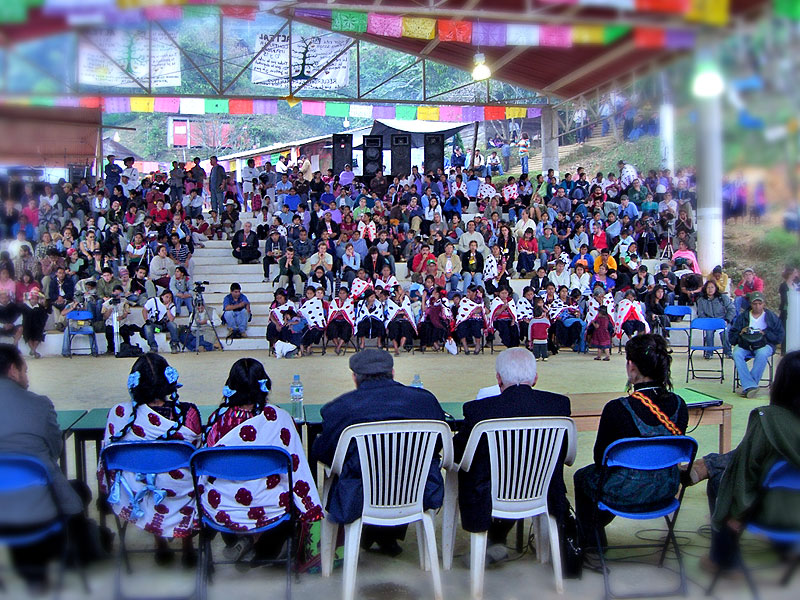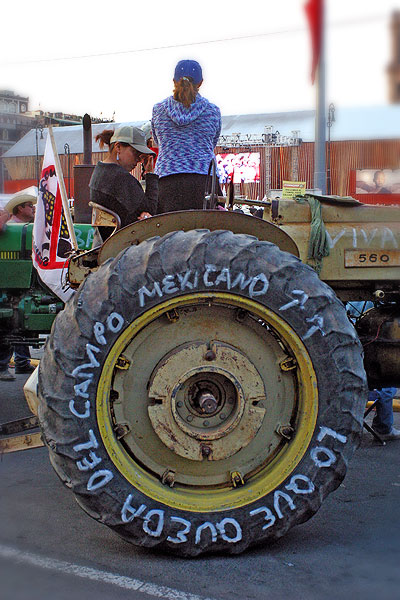
2007
02/01/2008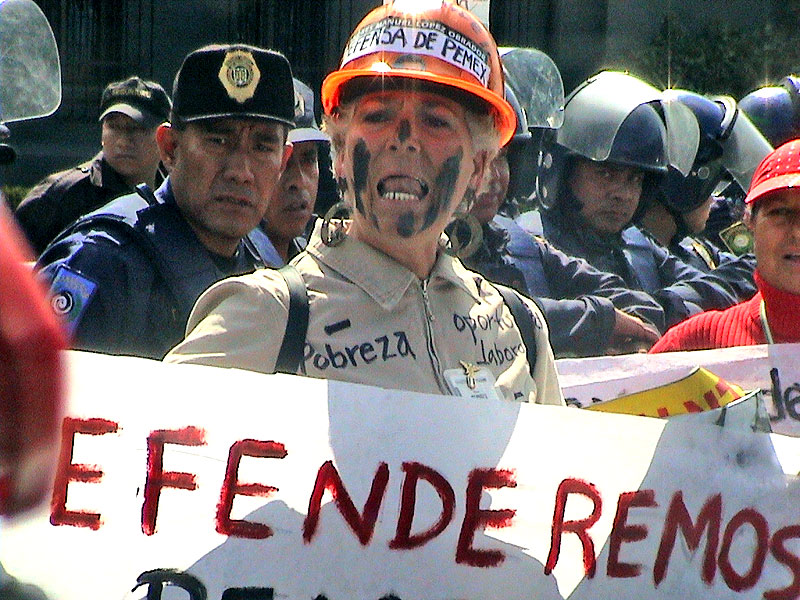
ANALYSIS: Mexico: growing polarization
30/05/2008“The killing of 46 defenseless civilians in Acteal, in December 1997, by a group of people bearing high-power weapons, is without doubt the gravest and most dramatic incident which has occurred in the conflict in Chiapas. The CNDH [National Human Rights Commission] established the responsibility, by commission or omission, of various public officials of the Mexican State.“
Report of the Special Rapporteur on the Situation of the Human Rights and Fundamental Freedoms of Indigenous People, Rodolfo Stavenhagen, E/CN.4/2004/80/Add.2, 23/12/2003]
“The State denies that the events analyzed here constitute part of any State strategy […] The public position of the federal and state governments is to refuse to recognize the existence of ‘paramilitaries’.“
Report given by the Mexican State to the Interamerican Human Rights Commission as part of the documentation in the Petition 212-05, 2006
Efforts have been made to “reroute the truth and make others believe that the State had nothing to do with the massacre, but we tell you that what happened in Acteal was a result of a political conflict designed from above, in the federal government of Ernesto Zedillo and the state government of Julio César Ruiz Ferro.“
Communiqué of the Civilian Organization The Bees (Organización Sociedad Civil Las Abejas), 22 October 2007
On 22 December 1997, in Acteal, Municipality of Chenalhó, in the Highlands of Chiapas, a massacre was perpetrated in which 45 Tsotsil indigenous people belonging to the Civilian Organization The Bees lost their lives. They were assassinated by a group of armed civilians as they prayed for peace in the church of the community. In their communiqué published on 22 November 2007, the Bees denounced, “we have spent 10 years demanding justice. The response has always been the same: all the authorities have said ‘we’re going to investigate in depth and with great seriousness,’ feigning worry and indignation for the events which occurred.”
Through its “Campaign Against Impunity: 10 and 15”, named for the 10 year anniversary of the massacre and the 15 year anniversary of their organized struggle, the Bees have proposed an even greater challenge: “nobody will be able to stop our campaign against impunity, because our struggle is not only about Acteal, but rather against all of the massacres and incidents of repression against our Mexican communities. We will not rest until we finally see justice carried out, against whoever needs to face justice, without any discrimination” (communiqué, 22 December 2007).
Antecedents to a “massacre foretold”, or the first stage of omission?
The Civilian Organization The Bees was formed in the municipality of Chenalhó (in the Highlands of Chiapas) in 1992. They united as a pacifist organization in the battle for indigenous rights and the peaceful resolution of local conflicts (see “Las Abejas (The Bees) Continue to Fly“, April 1998, SIPAZ report Vol.3, No.2). Although, as they note, their basic demands are the same as those of the EZLN, the Bees are opposed to armed struggle. They participated in the “peace belts” during the negotiation process between Zapatistas and the federal government in the nearby town of San Andrés Larrainzar, as well as in other activities to which the EZLN had invited civilian groups and organizations. It was perhaps this political proximity to the Zapatista position, together with the fact they neither have nor wish to have weapons that made them more vulnerable in the increasingly conflictive situation, which made itself apparent in Chenalhó throughout 1997.
It is impossible to avoid outlining the situation in the State of Chiapas at the time of the massacre, acting as if the killings were an isolated incident. From 1995 onwards, and while the San Andrés dialogs unfolded, the EZLN and several civilian organizations began to denounce the State’s simultaneous application of a counterinsurgency strategy in the North of Chiapas the promotion and protection of the group “Peace and Justice”, causing the displacement of thousands as well as more than 100 forced disappearances and assassinations. Months later, this strategy was implemented in the Highlands and Jungle Regions of Chiapas, taking on even more clearly the characteristics of “low intensity warfare.” The government seemed to be banking on the possibility that the EZLN would lose the support it enjoyed at a local, national and international level through a prolonged war of attrition comprised of political, military, economic, legal and communication dimensions.
During 1997, a wave of violence was unleashed across Chiapas. In response, a group of national and international civilian organizations, including SIPAZ, conducted a National and International Civilian Peace Observation Mission in Chiapas with the aim of carrying out field research and documentation of the denunciations of human rights violations and their implications for the Peace Process.
In Chenalhó, the conditions of the thousands of displaced people – in terms of health, clothing, housing and food – were critical. The Mission received testimonies that spoke of armed civilians and their repeated attacks against communities where members of the Zapatistas or the Bees were present and refused to collaborate in the purchase of more weapons. The terror caused by these attacks forced people to flee and seek refuge in the mountains, abandoning all of their belongings. At the same time, journalist Ricardo Rocha aired a documentary report on Televisa, one of the most-watched television stations in Mexico, which showed evidence of the living conditions of those displaced in Chenalhó.
In their communiqué on 22 October 2007, the Bees referred to the facts compiled by the Observation Mission and the Rocha segment: “before the massacre, those who called themselves ‘self-defense groups’ (a less political term for ‘paramilitaries’) came armed to indigenous communities, in pick-up trucks and accompanied by trucks of the State’s Public Security Police.” This would evidently indicate another kind of responsibility that can be laid at the door of State authorities in the lead up to the massacre.
On a federal level, on 18 October 1997, Raúl Vera López, then bishop of San Cristóbal, had sent a letter to the Chiapas Government Secretary Emilio Chuayffet, in which he warned of the “violent atmosphere” prevailing in the area. After the massacre, Chuayffet admitted that he had received this letter, but commented that “those who commit these acts have two advantages in their favor: surprise and their clandestine nature. It’s very difficult, practically impossible, that all of the violent incidents of this kind in the world could be avoided based on the mere knowledge of an atmosphere of violence.”
Chronicle of the massacre and the responsibility of public authorities: opposing versions
On 22 December 1997, a group of the Bees was in the church located in Acteal. They were praying for peace in their community, and others in the municipality from which an increasing number of people were being displaced, either for supporting the EZLN or for refusing to support a group who opposed them. The attackers began firing with high-caliber weapons, pursuing the victims who tried to flee. They mutilated several people with blunt weapons, and sliced open the stomachs of four pregnant women. In a killing spree which lasted for more than five hours, the assailants slayed nine men, 21 women (four of whom were pregnant) and 15 children.
Witnesses who managed to flee warned Gonzalo Ituarte, then vicar in the Diocese of San Cristóbal de las Casas, one hour after the massacre began. Ituarte immediately informed Chiapas Government Secretary Homer Tovilla Cristiani, who replied a few hours later that everything was under control. Despite their presence only 200m from the massacre itself, members of the Public Security Police did not intervene, even after being informed by neighbors of what was occurring in the church of Acteal.
Emilio Chuayffet, then secretary of the federal government , rejected the suggestion that the federal government was responsible through either action or omission. On 23 December, President Zedillo condemned the attack and announced that the federal government would take charge of the investigation. A few days after the massacre, 40 alleged aggressors, all with affiliations to the PRI or to the Cardenista Front for National Reconstruction Party, were arrested. Jacinto Arias Cruz, mayor of Chenalhó, was also arrested, accused of being the instigator of the massacre. At the end of December, 5,000 more soldiers arrived in Chiapas, with 2,000 deployed in Chenalhó alone. The number of displaced people increased significantly, eventually reaching around 10,000 people. At the beginning of 1998, Chiapas Governor Julio César Ruiz Fero and Government Secretary Emilio Chuayffet were both dismissed from their positions.
Investigations continued. Referring to the causes of the conflict, then Attorney General of the Republic Jorge Madrazo Cuéllar concluded that “the killing occurred because of intercommunity and interfamily conflicts.” Upon publishing the report “White Book on Acteal” (“Libro Blanco sobre Acteal”), Madrazo Cuéllar also declared that “if the Mexican Army had been present on 22 December 1997 in Acteal, these events never would have happened.”
However, Carlos Payán Velver, then president of the COCOPA (Commission for Agreement and Pacification, legislative organ to promote collaboration in the dialogues between the EZLN and the federal government), affirmed that from the beginning the president himself and the governor of Chiapas held “very great responsibility” in the massacre.
The years passed. The “official” version of the massacre as an incident caused by intercommunity conflict was recently given new life in the Mexican magazine Nexos, in two articles by Héctor Aguilar Camín, which were published towards the end of 2007. In line with the thesis published in the “White Book“, the author explains that because of Zapatista violence and the fact that the security forces’ hands were tied (by the Law for Dialogue, which prevented military actions against the EZLN while the Peace Process was open), various groups spontaneously armed themselves, then passed from the defensive to the offensive. Derived from this thesis is the idea that the State found itself in the middle, unable to act.
In its last report on the Mexican State’s responsibility in the Acteal Massacre (22 December 2007), the Fray Bartolomé de las Casas Human Rights Center again denounces the intentionality and the premeditation of the federal government in this case. The report states that Acteal was “the ideal justification by which Ernesto Zedillo, then president and supreme commander of the armed forces, could order the installation of military camps in Chenalhó, and thus continue to develop the counterinsurgency plan.”
Legal advances
According to the reports of the above-mentioned Human Rights Center and other human rights organizations, investigations into the massacre have resulted in guilty findings being handed down against more than 70 people accused of being directly implicated in the attack. They received sentences of between 25 and 40 years in prison for the crimes of aggravated homicide, aggravated injury, and bearing weapons authorized for the exclusive use of the armed forces without the appropriate licenses. The cases for delinquent association were not concluded. To date, 27 arrest warrants against indigenous people are yet to be served.
Many of these sentences are in the process of being contested. Those responsible for the defense of the prisoners have denounced that they were detained despite contradictory testimonies, which don’t agree even in the number of attackers present in the massacre, and that those who are allegedly responsible for the crime had no access to either lawyers or translators in the first stages of the proceedings. Another version of events is related to the fact that five of the accused confessed in the days following the massacre that they were responsible, together with four other individuals who still remain free. Regardless of which version of events is being examined, there are clearly many tasks pending for the Mexican justice system.
Fifteen former (low-level) government employees were tried and condemned to sentences of between three and 36 years in prison for aggravated homicide and injury, homicide and injury by omission or for bearing firearms authorized for the exclusive use of the Mexican Army. Two arrest warrants have been issued – but not served – against the then state police coordinator and the director of the state public security police.
The 22 December 2007 detention of Antonio Sántiz López, alleged “head of the Chenalhó paramilitaries”, has been brought into question by critics. They consider that this step, hailed by the local press as a great achievement for the justice system – it was published as the detention of “the intellectual author of the massacre” – is actually a way of covering up responsibility at other levels. High-level officials, including members of the army, who are suspected of involvement in the massacre either through omission or acquiescence towards those responsible, have given no account for their actions and have continued to elude the justice system.
Given the lack of advances on a national level, the Fray Bartolomé de las Casas Human Rights Center together with survivors and family members of those assassinated in the massacre, presented a Petition to Open a Case in the Interamerican Human Rights Commission in February 2005. They also issued a Petition to Open a Case against the Mexican State for various human rights violations committed in the case of the Acteal Massacre. In an interview published in the magazine Proceso (on 21 April 2005), Bishop Raúl Vera López commented on the request: “The situation cannot remain in impunity; the rule of law must be reestablished. In accordance with international law, crimes against the indigenous population of Chiapas (assassination, torture, forced disappearances) are crimes against humanity. Accusations are being made against Ernesto Zedillo.”
During the National Gathering Against Impunity in December 2007 (described below), a campaign was announced to denounce ex President Ernesto Zedillo for “permitting the massacre,” and to demand that he be expelled from his Chair at the prestigious US institution, Yale University. Zedillo is currently the director of Yale’s Center for the Study of Globalization.
Impunity, a national plague
The Bees have declared time and again that they don’t want revenge for the Acteal Massacre. They continue to demand justice so that events like this are not repeated. In this line, in 2007 they conducted a campaign to commemorate 10 years of impunity for the massacre, and 15 years of existence of their organization. On 20 and 21 December 2007, more than 200 individuals representing some 50 organizations from Mexico and abroad participated in the National Gathering Against Impunity, organized by the Bees in Acteal.
The first day of the Gathering was dedicated to presentations providing analysis of the national political context; highlighting the need for greater networking between organizations and social movements; and outlining the legal context and the need for justice for the assassinations of women and the Acteal case, among others. On the second day, mixed working groups were formed (with the participation of members of the Bees and external organizations) to debate these topics at greater length.
Tragically, Acteal is just one case of injustice and impunity. Many more exist in Mexico today. In line with the arguments made in 2001 and 2002 by UN Special Rapporteur on the Independence of Judges and Lawyers, Dato Param Cumaraswamy, is the Amnesty International report “Laws without Justice: Human rights violations and impunity in the public security and criminal justice system”, published in February 2007. The report claims that “impunity for human rights abuses remains the norm in many states, encouraging public security and criminal justice system officials to resort to abusive practices when carrying out their duties.”
In his speech at the National Gathering Against Impunity, Edgar Cortez, Coordinator of the Network All Rights for Everyone (Red Todos los Derechos para Todos) spoke of impunity as one of the four outstanding factors in Mexico’s current political context, together with increasing militarization, authoritarian convergence (the “iron fist” promised by Calderón), and the criminalization of social protest. Cortez emphasized that impunity is not a new phenomenon, citing the cases of the massacre of students on 2 October 1968, and the Dirty War of the 70’s and 80’s which led to the forced disappearance of more than 500 people. He also spoke of recent cases such as Oaxaca, Atenco, Pasta de Conchos and Lydia Cacho.
In a November interview (published in La Jornada on 1 November 2007), Edgar Cortez was already making reference to the articles which aimed to polarize opinions on the events of Acteal: with those kinds of “stories” told by “officious” spokespeople, the aim is to “allow systematic attacks to be perpetrated against civilians across the country, as has already occurred in Chiapas, Guerrero, Oaxaca and Veracruz, where indigenous communities are displaced, people are tortured, women are raped and executions and forced disappearances are carried out.”
The fact that no resolution has been achieved in such a publicized case as Acteal is bad news in regards to the human rights situation and the level of impunity in Mexico. The Bees are aware of this, and continue in a fight that they know will be a long one: “time and space have given us room to allow our memories and our hearts to fight against the impunity of the Acteal Massacre. We continue to speak up until our voice is heard and until those responsible are punished in accordance with the law” (October 2007).

